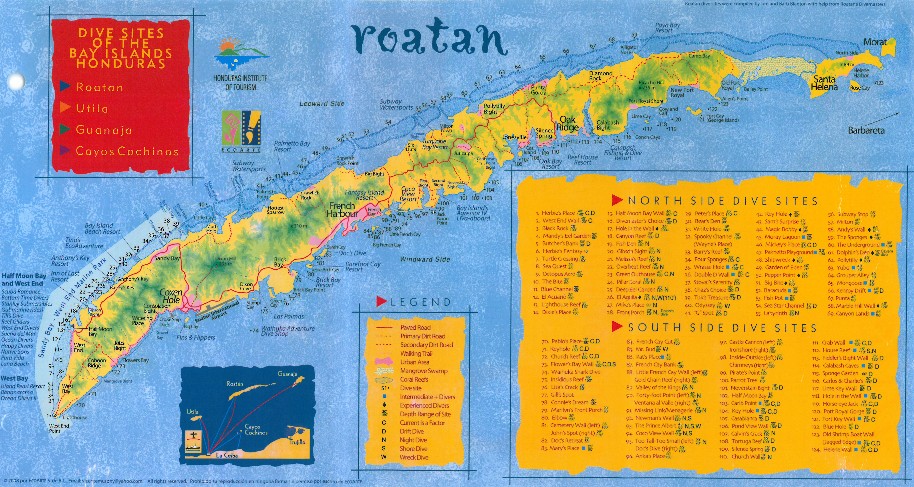Honduras
Menu principal:
Dive sites
DIVING
DIVE SITES
In Roatan Island, some favorites, among many, many others, include:
Mary's Place: fissures in the coral form a deep, sheer-faced maze at this one-of-a-kind site. Winding through, you'll likely see jacks, lobsters and crabs, and huge schools of silversides. Near the mooring, keep an eye out for seahorses. Mary's Place is near French Harbour, and is usually combined with another south-side dive.
Texas: part of the same area known as West End Wall, Texas is so called for its wide open terrain and Texas-sized barrel sponges. A deep, strong current means you can sometimes fly over the reef at three to four knots without lifting a fin. It's not uncommon to see free swimming morays, large groupers, and even the occasional hammerhead. You may even spot the elusive sargassum triggerfish.
Hole in the Wall: another amazing dive where you drop through a hole in the reef at 6 meters and descend through a narrow sloping channel before it spits you out 30 meters down. Be sure to look up at the spectacular vertical vista above you.
El Águila Wreck: scuttled in 1997 just opposite Anthony's Key Resort, the Águila was a good dive until Hurricane Mitch came along and broke the ship into three pieces. As you descend, you may draw a crowd of huge groupers looking for a snack, and resident moray eels may join you.
Blue Channel: a 10 meter deep channel running parallel to shore just off West End, Blue Channel has some easy swim-throughs and an incredible array of fish and reef life, including triggers, damselfish, grunts and barracuda.
Overheat: A shallow dive site that's good for novice divers. Its proximity to the Águila wreck makes it a good place to spot giant groupers.
There is also attractive dives in Utila (a small island, about 13km long and 5km wide, just 29km away from the mainland), Guanaja (a small island, roughly 18km long and 6km wide, covered by a forest of Caribbean pine and encircled by a vibrant coral reef) and Cayos Cochinos (comprised of 2 small and 13 little keys with white-sand beaches, turquoise water and palm trees, also known for their unique pink boa constrictors). Check out the dive maps of Utila here, Guanaja here, and Cayos Cochinos here.
